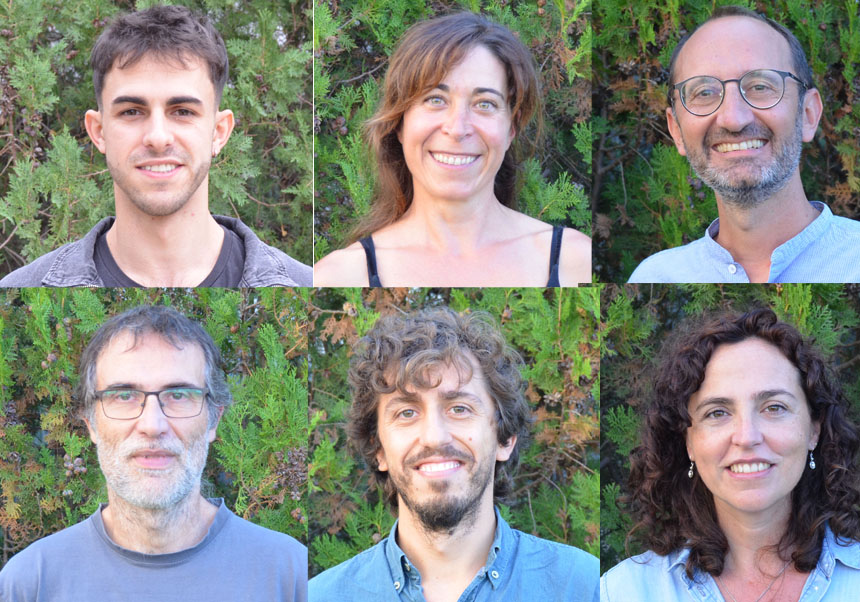Artificial Intelligence shows that socioeconomic level conditions migrations due to environmental catastrophes
- Scientific Culture and Innovation Unit
- December 15th, 2023

An article from the Image and Signal Processing (ISP) research group of the University of Valencia (UV), led by Gustau Camps-Valls and which has used Artificial Intelligence (AI) as a tool, concludes that the socioeconomic level explains the population movements that occur after catastrophes generated by extreme natural phenomena such as floods, windstorms and landslides. The work has been published in the journal Nature Communications and for it a global database was created with floods, windstorms or landslides during the period 2016-2021.
Researchers used explainable machine learning techniques to model and understand population internal displacement flows and patterns on a global scale based solely on observational data provided by collaborators at the Internal Displacement Monitoring Center (IDMC) in Geneva, the centre of international reference in monitoring the internal displacement of populations in each country. The work demonstrates that population movements can be mainly attributed to the combination of poor domestic conditions and heavy rainfall. The work provides a means to quantify displacements and mitigate their effects from data, based on AI and causal inference, the process of identifying and understanding cause-effect relationships between variables.
Gustau Camps-Valls, professor of the Department of Electronic Engineering, and coordinator of the ISP group at the Image Processing Laboratory (IPL) of the UV, explains that this study “evidences the differential vulnerability to extreme climate events. Not all communities face the same risks, and we quantify these differences, providing a solid foundation for evidence-based mitigation and adaptation strategies. “This study demonstrates this by generating a unique database and innovative AI and Causality methodologies, with great potential to contribute to informed decisions.”
Regarding the practical applications of the study, Eva Sevillano points out that this methodology and results “can be a starting point to advance adaptation and mitigation strategies, which will allow communities and policy makers to build resilient solutions and anticipate by identifying areas vulnerable and understand the causal factors.
Michele Ronco and José María Tárraga, technical leaders of the study and also IPL researchers, highlight the importance of the methodologies used. Thus, Ronco, the first signatory of the study, highlights: “The use of explainable machine learning techniques allowed us to decipher this complex puzzle of interactions between vulnerability, exposure and natural disasters. “This provides a deeper understanding of the drivers of population displacement”.
For his part, Tárraga has highlighted that explainable and causal artificial intelligence methods have been an essential tool to analyse situations that are so complicated to address. “This has allowed us to go beyond the limitations of traditional parametric models,” he highlighted. In addition, he points out “the difficulties” that existed during the research: “Gathering and combining data from such heterogeneous factors that describe environmental, climatic and socioeconomic conditions at a global level and the relevance of having accurate and reliable information in extreme climatic conditions were significant challenges”. Maria Piles also points out that the interaction with humanitarian agencies “has been constant and essential for the evaluation of the results.”
This study, backed by significant collaborations and support from institutions such as IDMC, European projects such as DeepCube or XAIDA, and the BBVA Foundation, is a milestone in the understanding of population displacements in the context of extreme climate events and paves the way for strategies mitigation measures and more effective, data-based policies. Local entities, experts and humanitarian organisations confirm that this line of research is very necessary and of great help for their field activities.
Article reference: Michele Ronco, José María Tárraga, Jordi Muñoz, María Piles, Eva Sevillano Marco, Qiang Wang, Maria Teresa Miranda Espinosa, Sylvain Ponserre & Gustau Camps-Valls. «Exploring interactions between socioeconomic context and natural hazards on human population displacement». Nat Commun 14, 8004 (2023). https://doi.org/10.1038/s41467-023-43809-8
















